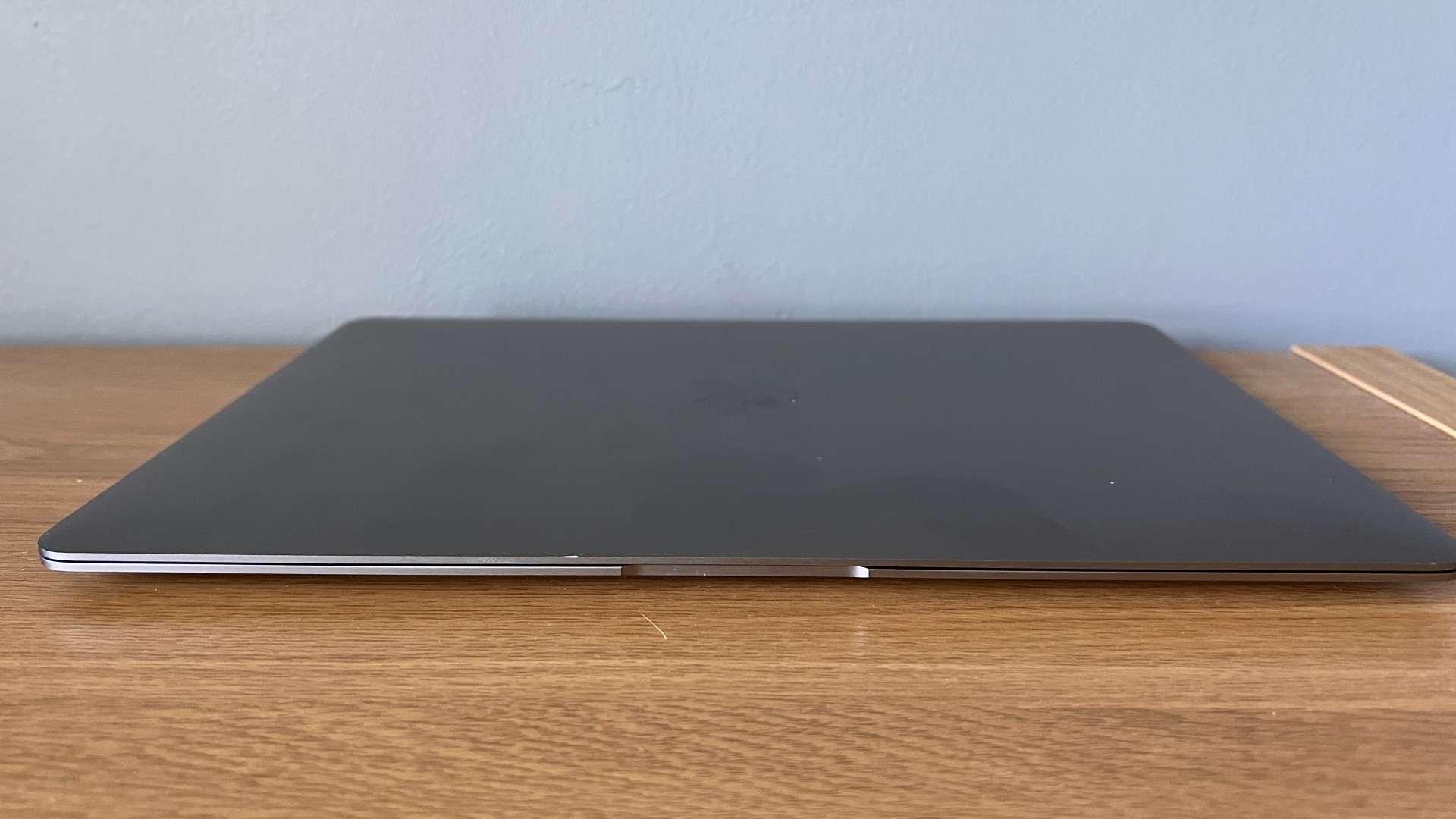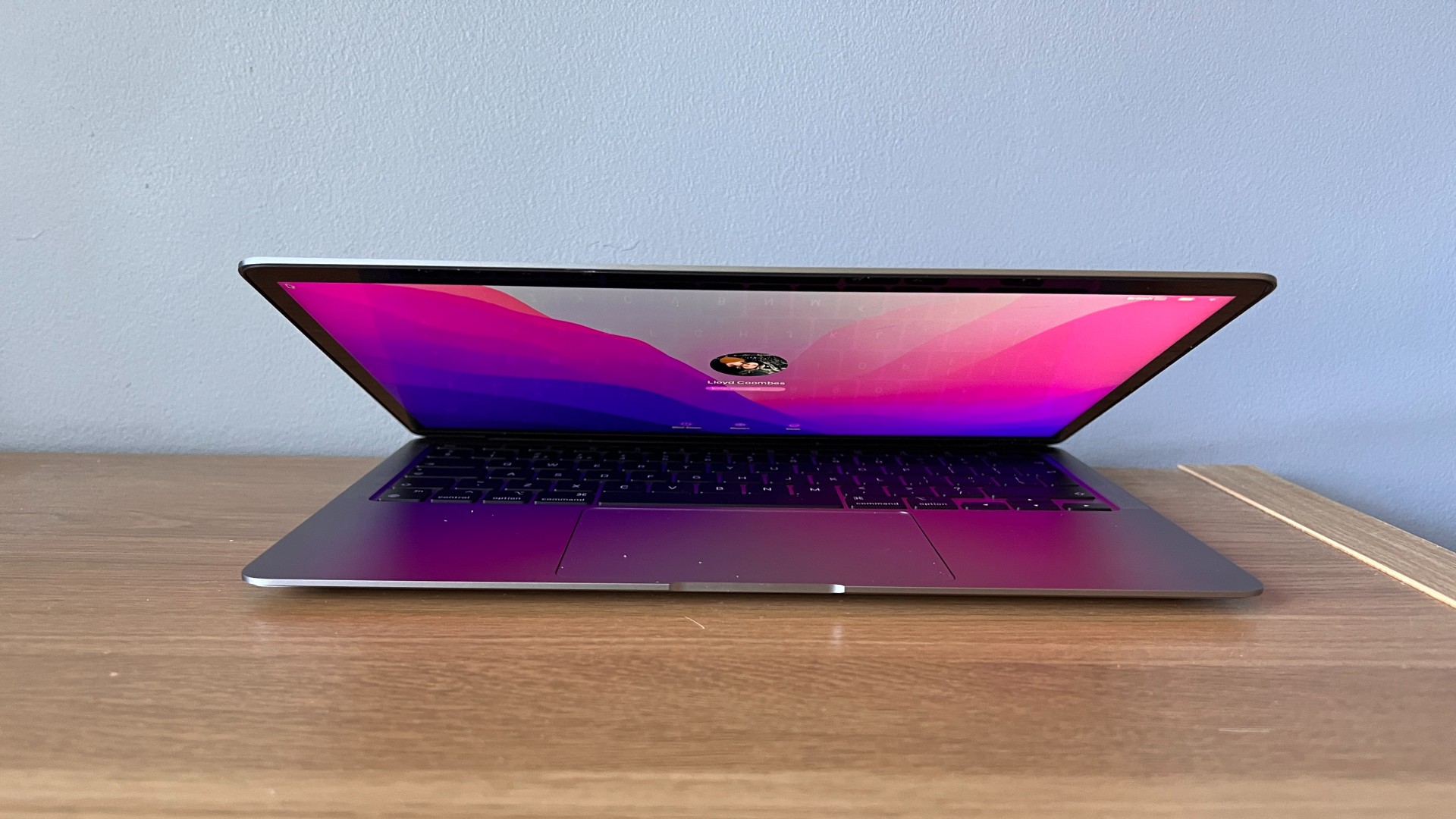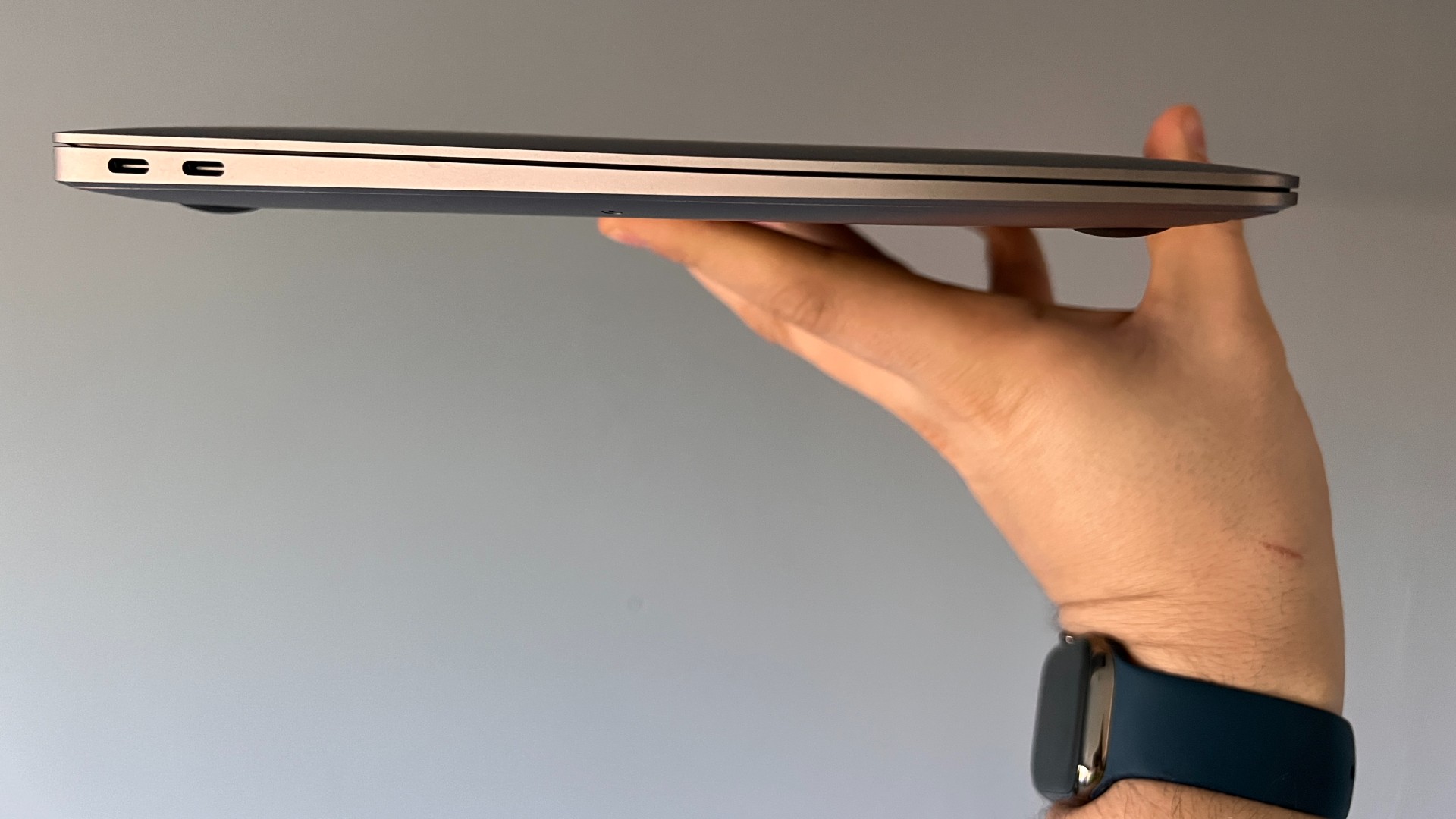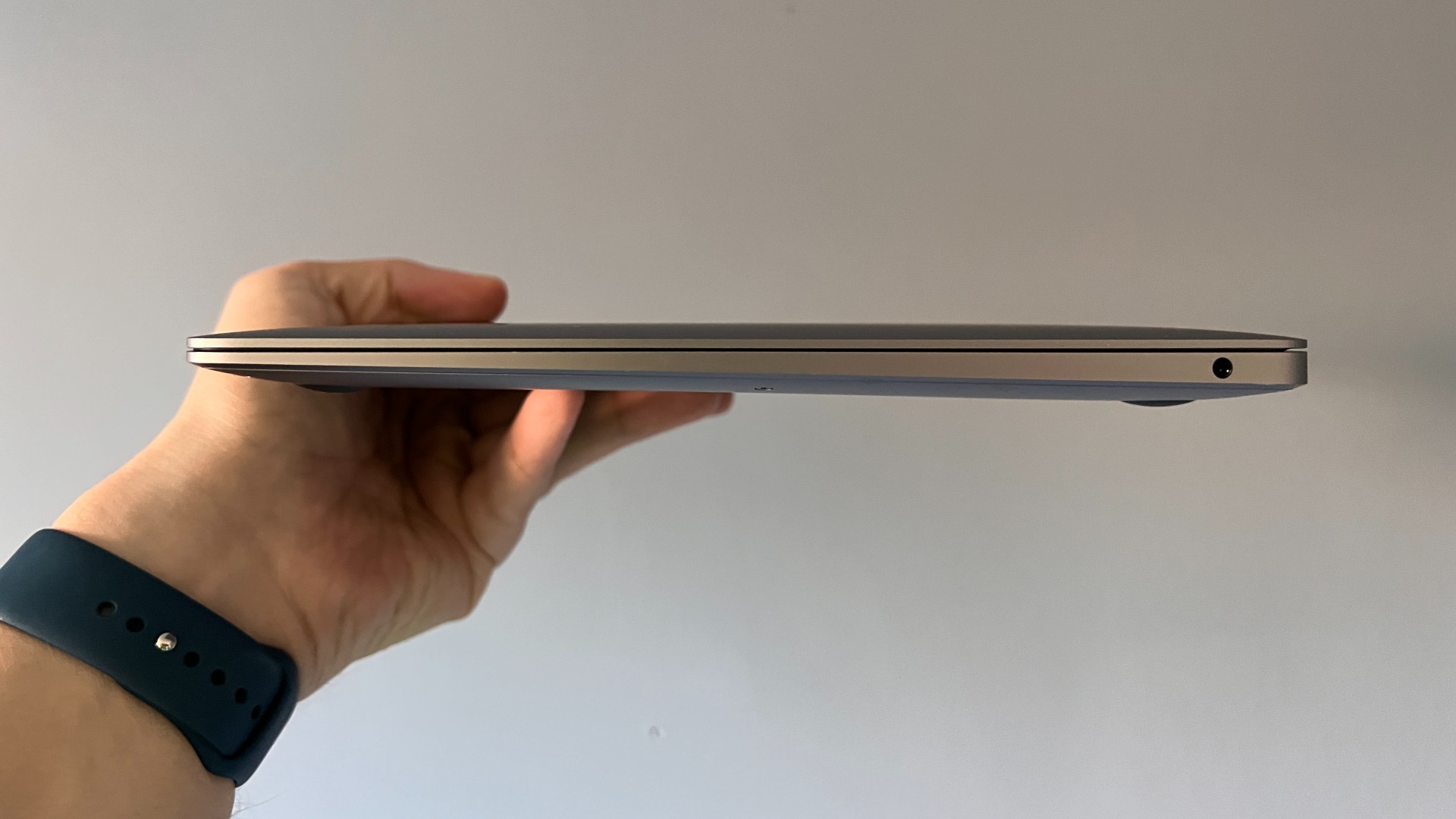Space Verdict
Apple’s M1 chip gives the MacBook Air new life, making its most portable laptop an even more powerful one too.
Pros
- +
Incredible battery life
- +
Slim notebook design
- +
Can run iOS apps
Cons
- -
No design refresh
- -
Camera still only 720p
Why you can trust Space.com
Apple’s MacBook Air is the company’s most popular laptop, and yet it felt like it had been forgotten about for a while. Aside from spec bumps every now and again, the MacBook Air, as light and portable as it is, was swept aside by the MacBook Pro on one side and the iPad Pro on the other.
The good news is that the M1 chip makes this latest 2020 model the best MacBook Air there’s ever been, with a wealth of performance improvements that extend the battery life, too.
Price: Starting at $999
Screen size: 13.3-inch
Weight: 2.8 lbs (1.27 kg)
Memory: 8GB as standard, configurable up to 16GB
Battery life: up to 15 hours wireless web browsing
Storage: 256GB, 512GB, 1TB, or 2TB versions
Operating system: macOS Big Sur
Display: Retina display with 2560 x 1600 resolution, 227 pixels per inch. 400 nits brightness.
CPU: Apple M1 chip 8-core CPU
Graphics: M1 includes 7-core GPU
Ports: two USC-C ports (USB 4 support)
While we’d have liked a bit more pizazz on the outside, and a better built-in camera, it’s fair to say that the M1 helps the MacBook Air hit new heights – finally hitting its potential for a powerful notebook you take anywhere.
There are some concerns about the longevity of its fan-less design, but that does help it remain silent during use – whether you’re touching up images, wrangling audio, or even editing video. You’ll no doubt want to splash out for the MacBook Pro for heavier workloads, but many creatives will still love what’s on offer here.
Apple has finally exorcised the demons from its laptops by reverting to scissor switch keyboards, but there are only two ports to be found here – that can make it a tougher prospect if you rely on connecting external displays as well as docking stations and the like. But for a laptop you can grab while sitting on the couch, the train, or at the coffee shop, there really is nothing better.
MacBook Air M1 review: Design

- Available in Gold, Silver, or Space Gray
- Scissor switch keyboard
- Thin design, but feels dated
The M1 MacBook Air looks, well, just like the Intel-based MacBook Air. There’s an argument that the design of Apple’s laptops have a classic appeal to them, all aluminum casing and glossy logo (still no light-up logo, sadly), but the MacBook Air, for the most part, resembles what Steve Jobs pulled from an envelope all those years ago.
There’s still that contentious black bezel around the 13.3-inch display, with the MacBook Air logo proudly displayed beneath it, and a FaceTime camera that’s still, in 2022, 720p. The keyboard, now comprised of scissor switches, offers excellent travel, and the trackpad remains industry leading for control and gestures.
Breaking space news, the latest updates on rocket launches, skywatching events and more!
As before, the base of the laptop is a “wedge”, with the front considerably slimmer than the back, but balanced with small “feet” underneath. On the left side, you’ll find two USB-C ports that are USB 4.0 compatible, and on the right-hand side, you’ll find just a headphone jack.
Speakers flank the keyboard, too, and they offer impressive depth given the svelte chassis they’re in, and there’s a TouchID fingerprint sensor in the top-right corner of the keyboard for unlocking the device or using Apple Pay.
MacBook Air M1 review: Performance & features

- M1 chip allows for iOS and iPadOS compatibility
- Huge battery life improvements
- Instant wake from sleep
On the inside, it’s all change for the MacBook Air this time around. The M1 chip leans on Apple’s now decade-and-a-half knowledge of manufacturing its own iPhone processors.
Not only does it replace multiple components at once to save space, but doing so increases both performance and battery life. On prior Intel-based machines, the CPU, GPU and other components would copy data between each other, spending energy while also requiring more resources. Now, everything is in the same spot, so copying is much less common which saves energy and maintains performance over long periods.
With an 8 core CPU, the M1 MacBook Air is three-and-a-half times faster than the prior Intel version, which opens up more opportunities for budding creatives, or even more accomplished ones, to use the laptop for image manipulation or video editing.
The M1 also offers impressive gaming performance. Sure, Macs will never play as hard as Windows PCs, but if you’re an Apple Arcade subscriber, a Football Manager addict, or even a League of Legends enthusiast, you’ll be more than catered for here.

One of the most impressive advances is just how quickly the MacBook Air can wake and be ready to work. Because in many ways it’s inspired by the iPhone and iPad, you can leave it in a sleep state and it’ll be instantly ready when you open the lid or hit a key. Worried about battery life? Don’t be – in testing we were able to eke out an incredible 15-hours of work and play – streaming Spotify audio, listening to podcasts, editing Google Docs, and firing off emails.
As we noted in our M1 MacBook Pro review, Apple’s also got compatibility sussed when it comes to the M1. As your apps aren’t necessarily M1 optimized, the MacBook Air uses a translation layer called Rosetta 2 that kicks in the first time you open an app, in the background. You won’t notice it, but it recompiles your app to make it run on M1, and you’ll see no performance loss because of it. Of course, if your app has been updated to take advantage of the M1, you can expect even smoother performance.
On the subject of compatibility, the M1 Mac can run many iOS and iPadOS apps now. That makes it easier to access your bank without going through websites, or order food from a faster, easier-to-use system. We’re excited to find more apps that make use of the feature.
Sadly, as with the M1 MacBook Pro 13-inch, the camera really does let the side down. With so much of the world still relying on video calling, it’s disappointing to have to use a 720p camera.
MacBook Air M1 review: Image editing
- Photoshop optimized for M1
- No fans means silent operating
- Retina screen showing its age perhaps
If you’re used to the fans in prior Mac models spinning up when trying to complete more demanding tasks, you’ll be pleased to know that the M1 MacBook Air doesn’t have fans. That means it’s silent when running, and while there is a question over how this will affect it in the long run, Apple is using an aluminum heat spreader that dissipates the heat internally. So, if you’re editing video in Final Cut Pro, you’ll be able to do so without cranking up the volume.

Photographers have it even better, too. Adobe and Serif both jumped on board with M1 immediately, which means Photoshop and Affinity Photo are already native apps, seeing huge speed boosts on editing layer to layer, or making sweeping changes to a project. If you like to edit on location, that additional battery life will feel like a game-changer, but you will need a dongle to get your shots across.
Our only small gripe is that, compared to the new 14-inch and 16-inch MacBook Pros, the Retina display on the M1 just feels flat. It’s accurate, sure, but compared to the XDR display offered on those notebooks, it just feels like we’ve been spoiled when coming back.
MacBook Air M1 Review: User reviews
Amazon’s user reviews are pretty unanimous with praise for the M1, with a 4.8 out of 5 star rating across 13,823 reviews at time of writing. Positive reviews praise the MacBook Air M1 for its stylish design, small form factor, and great performance.
There are some complaints though, with some users stating that 8GB of RAM may be insufficient for more complex projects – and we’d tend to agree. While the 8GB version we tested is breezy in the majority of tasks, anyone looking to take on larger scale edits of photos and video may want to look at the MacBook Pro instead.
Others have issues (understandably) with the webcam and shallow keyboard, while others would have preferred a few more ports.
MacBook Air M1 Review: Price & Warranty
The entry level model of the MacBook Air M1 (256GB storage) costs $999. You can also upgrade to one of the higher tier models with 512GB storage, which also adds an extra core to the CPU for a little power boost.
Laptops are difficult to upgrade once you've purchased them, and Apple laptops doubly so, so make sure you think about what you need before you purchase. If storage does turn out to be an issue later though, you can always buy an external hard drive.
Should you buy the MacBook Air M1?
The MacBook Air finally has a processor that brings out the best parts of it, making it much more portable and much more powerful.
The M1 is a huge improvement over the Intel-based version, and while you’ll need to go for a MacBook Pro for more ports and higher headroom, the vast majority of laptop customers will have everything they need right here.
That said, it’s quite likely the design could be updated this year, so it may be worth holding out for a little longer.
If this product isn’t for you
If you want more ports, more power, and a better webcam, the MacBook Pro 13-inch is excellent – but it’s also significantly more expensive with prices starting at $1299.
As noted above, we’d consider holding out to see what 2022 brings, because the MacBook Air remains Apple’s lowest priced laptop, but it’s still not cheap.
If you'd rather look at a Windows laptop for your photo editing needs, then we'd recommend checking out the Microsoft Surface Laptop 4. This stylish laptop from Microsoft is cheaper than the MacBook Air at its base price, and offers similar performance.
You can also consider the Dell XPS 15 if you're ok getting a slightly bigger laptop - it's not as light and portable, but the trade off is that it's more powerful and offers a bigger screen, which is ideal for photo editing and other creative tasks.
Lloyd Coombes freelance tech and fitness writer. He's an expert in all things Apple as well as in computer and gaming tech, with previous works published on TechRadar, Tom's Guide, Live Science and more. You'll find him regularly testing the latest MacBook or iPhone, but he spends most of his time writing about video games as Gaming Editor for the Daily Star. He also covers board games and virtual reality, just to round out the nerdy pursuits.


